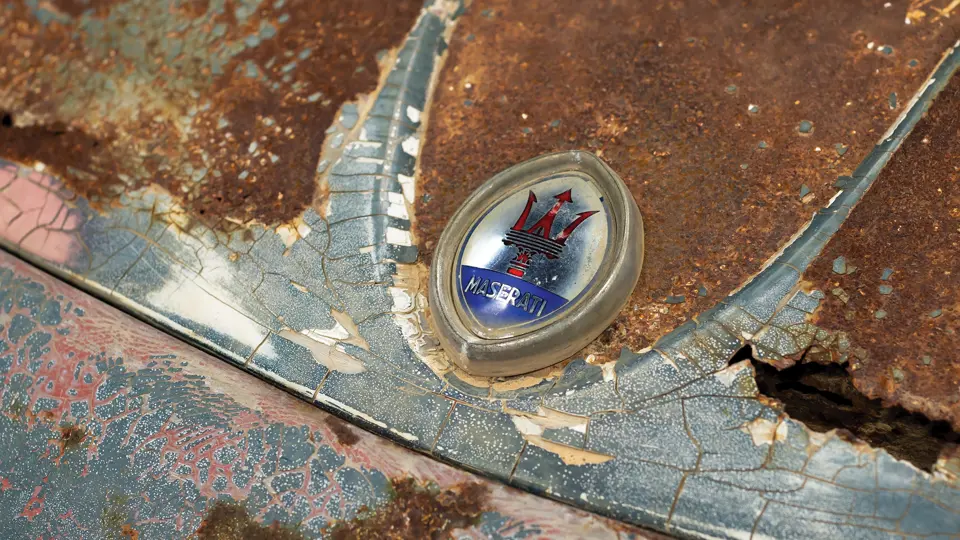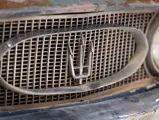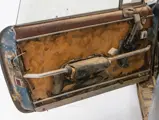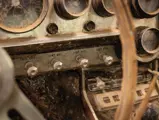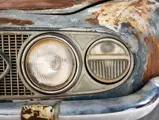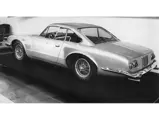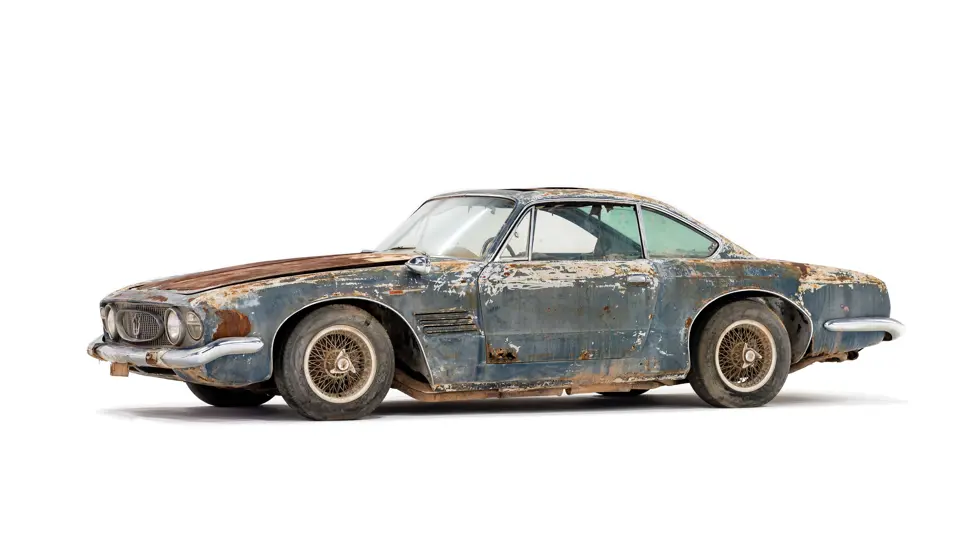
1961 Maserati 5000 GT Coupe by Ghia
{{lr.item.text}}
$533,000 USD | Sold
{{bidding.lot.reserveStatusFormatted}}
- Displayed by Ghia at the 1961 Turin Motor Show
- One of only 34 5000 GTs built, and the only example bodied by Ghia
- Originally built for Ferdinando Innocenti, creator of the Lambretta scooter
- Whereabouts unknown until recently discovered after 50-plus years
- Offered from single-family ownership for the last several decades
- Stunning one-off example of Maserati’s ultimate road car
Intrigued by the Maserati 3500 GT but looking for something more exclusive, Mohammad Reza Pahlavi, the Shah of Iran, approached Maserati to build him a road car with the powerful five-liter V-8 that was developed for the mighty 450S sports racing car. Maserati, keen to field expensive specialty orders from wealthy clients, set about the task, with engineer Giulio Alfieri reinforcing a 3500 GT chassis and dropping in one of the unused 450S motors.
The new model was named the 5000 GT and was publicly introduced at the Turin Motor Show in November 1959, and two additional cars were soon built to the same mechanical configuration. The V-8 was soon re-engineered for better manners around town, and in this form, 31 more cars were built for a total of 34 examples.
At almost twice the price of the 3500 GT, and bodied by no less than eight different coachbuilders to varying designs, the 5000 GT was a top-shelf automobile on par with the Ferrari Superamericas being produced in Maranello. They justifiably attracted the attention of an elite ownership that included Gianni Agnelli, Briggs Cunningham, and the Aga Khan, among other influential buyers.
This 5000 GT, chassis no. AM103 018, was completed in July 1961 and was the ninth example built. Most 5000 GTs were built with understated bodies by Allemano, but 018 was the only example coachbuilt by Ghia. Sergio Sartorelli, head of the style prototyping department at Ghia, created its stunning one-off design incorporating cutting-edge styling elements of the time, many of which were later seen on other Ghia designs. Sartorelli was best known for designing the Karmann Ghia Type 34, Fiat 126, Fiat 2300 coupe, and Chrysler Ghia Crown Imperial limousine, along with his work as the director of design at OSI.
In addition to his work with Ghia and OSI, Sartorelli also designed a few prototype Lambretta scooters, meeting Ferdinando Innocenti in the process. An Italian businessman whose factories were destroyed in World War II, Innocenti envisioned a future of affordable transportation and created the Lambretta scooter in 1947, making him one of the wealthiest people in the country. Innocenti recognized Sartorelli’s talent and had him design his personal 5000 GT.
Ghia displayed 018 on their stand at the 1961 Turin Auto Show, finished in its original color combination of silver over black. A high-quality period color photo of the car at Turin shows its beautiful design and color combination. Before delivery to Innocenti, Maserati loaned the car to Sports Car Graphic editor Bernard Cahier for a high-speed road test featured in their January 1962 issue. Cahier wrote, “We found ourselves glued to our seats by the tremendous acceleration such as is found only in racing cars…I have driven many fast cars before, but never did I feel such power coming on so fast, so fast indeed that when I shifted from 3rd into top gear on the first little straight, I found that the car was already doing 135 mph!” The Maserati covered a standing kilometer in 26.6 seconds at 135 mph, the fastest sprint Cahier had ever recorded at that time.
Innocenti later sold the car, and after being owned by a few people in Italy, it found its way to Saudi Arabia, where it was long thought to have been lost. Rubayan Alrubayan, a Saudi Arabian car enthusiast, acquired the Maserati in the 1970s and, unaware of its significance, parked the car, where it sat unmoved for decades. After Alrubayan’s death several years ago, his heirs decided to bring the car inside to prevent further decay and are now offering it for sale. Arabic spray paint on the side of the door marked it as abandoned and due to be scrapped, but thankfully it was saved just in time.
After sitting outside for nearly 50 years, AM103 018 is in remarkably complete condition and would be an ideal example to restore to its former show-car glory. Although weathered, it has never been vandalized, disassembled, or stripped of parts. Remnants of its original silver paint and subsequent blue paint (from the mid-1960s) are visible. Even the unused spare tire is still in the trunk! Original pencil drawings from Ghia can be seen on the inside of the driver’s-side door panel where the leather has peeled back, and the original glass remains in excellent condition. Although difficult to read, the odometer shows 15,561 kilometers, which very likely is its original mileage. As a one-off coachbuilt example of Maserati’s ultimate road car, it would be celebrated at virtually every concours event and is eagerly awaiting its return to the limelight.








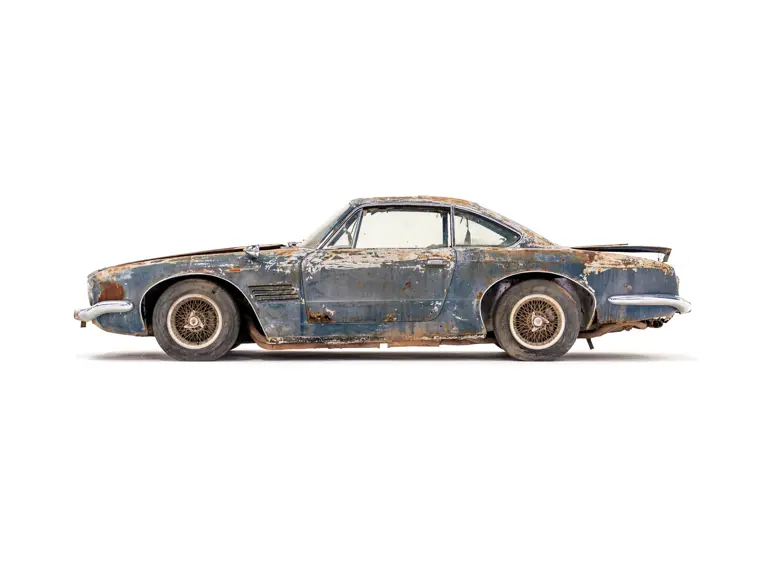





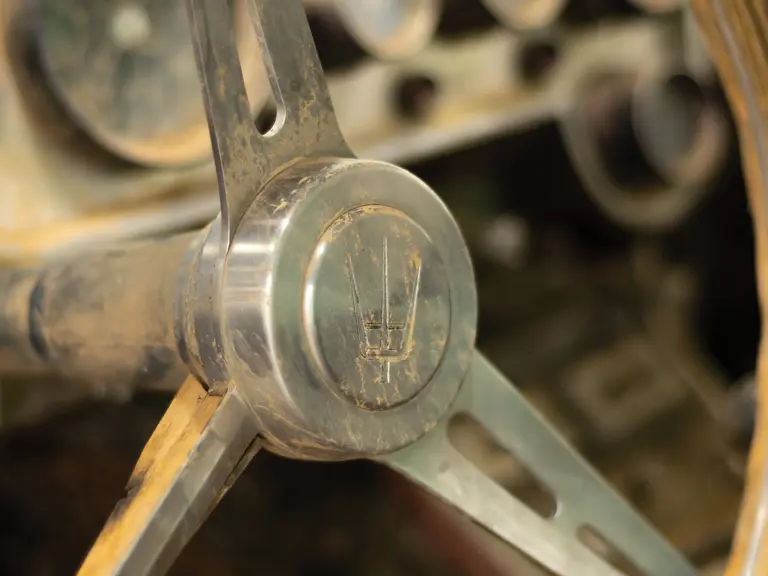




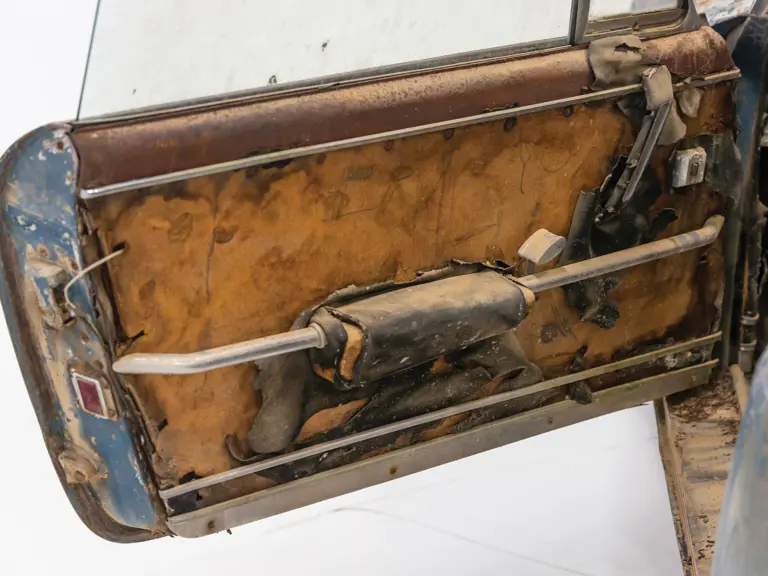





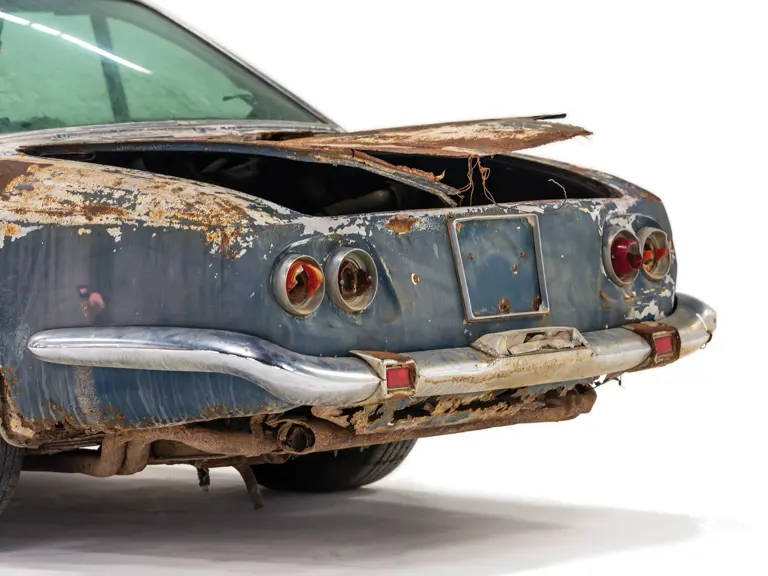
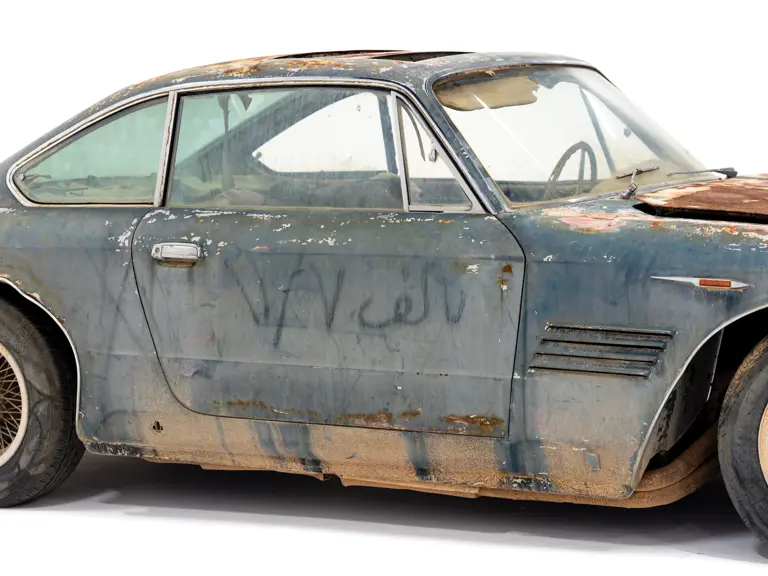



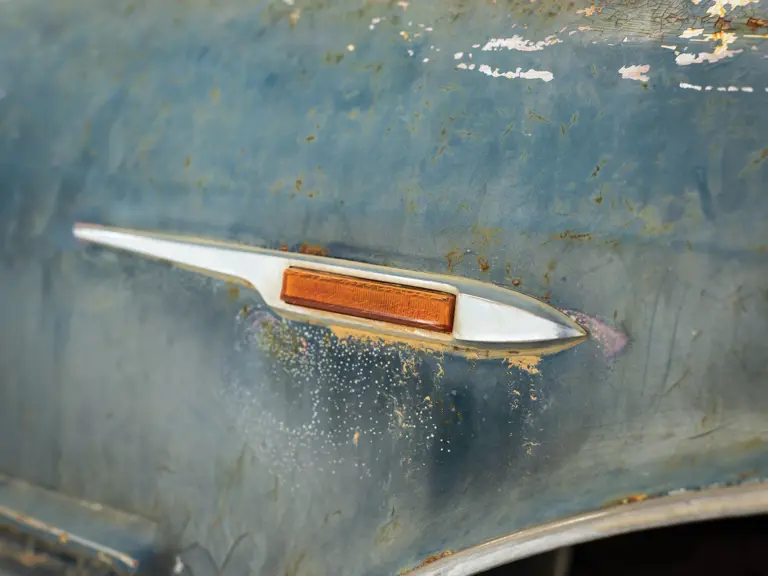
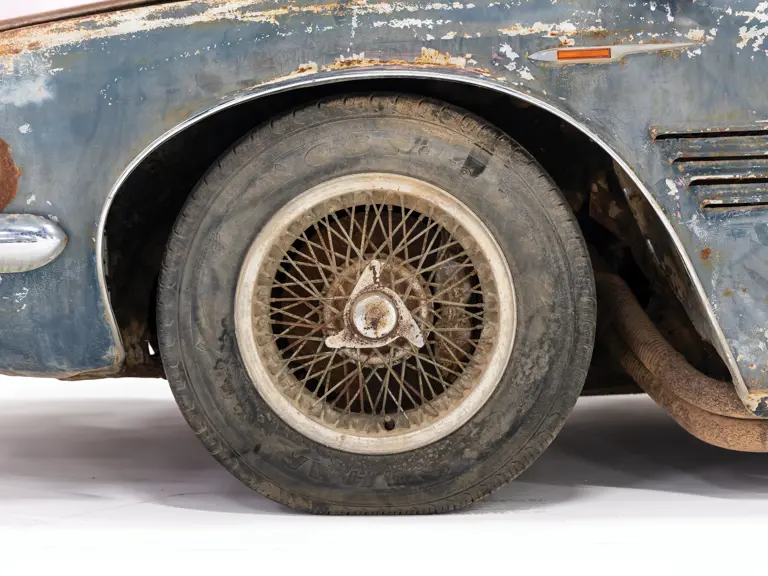



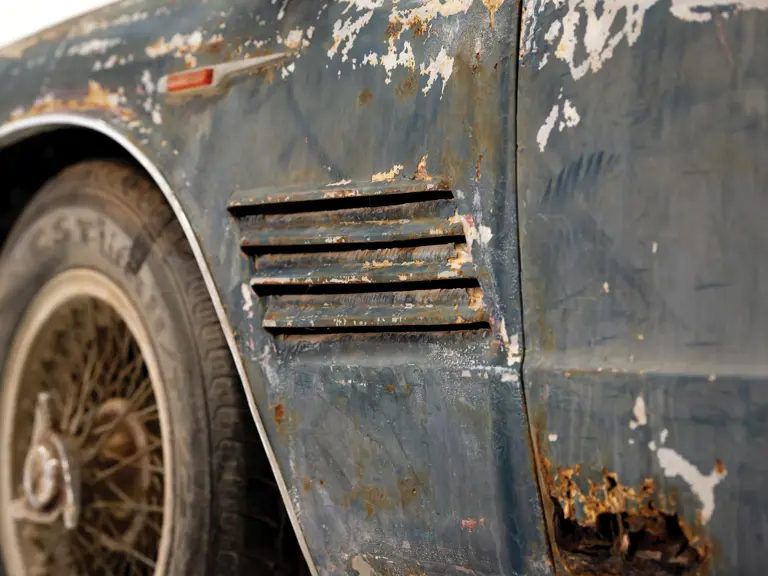
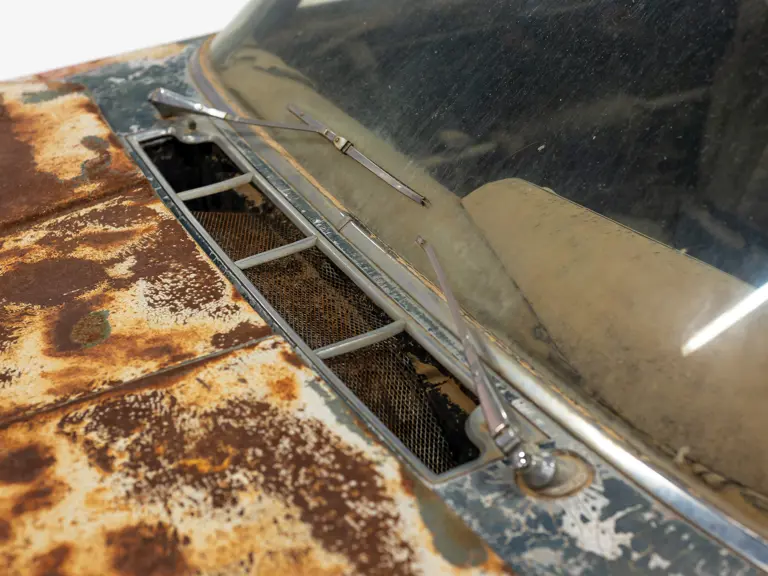









 | Monterey, California
| Monterey, California


